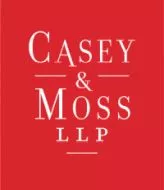In my last blog, we explored on how to pull a parcel register without a PIN (Property Identification Number) via ONLAND. In this post, we will walk through how to read parcel register and how to search for instruments associated with a property.
Below is a detailed description of information found in a sample parcel register provided by ONLAND.

Key Information Found in a Parcel Register
When reviewing a parcel register, always begin by checking the date of the document in the top-right corner of the first page, to make sure it is up-to-date.
Then you will find the following information:
PIN – Each property is assigned with a unique number, which identifies the block and lot number. For example, PIN 25050-1111 means 25050 is the block number and 1111 is the lot number.
Legal Description – This section provides a formal description of the property's location, boundaries, and conditions. For example, S/T indicates that the property is subject to certain rights, such as easements, (e.g., a shared driveway or hydro easement). T/W (together with) indicates that the property is granted rights over another piece of land. It's important to review the related legal document to fully understand the nature of any easements.
Current Owner(s) and Type and Percentage of Ownership: The register shows the name(s) of the current owner(s) and type of ownership, such as joint tenancy or tenancy in common. For tenancy in common, the register specifies the percentage of ownership for each owner.

Registered Instruments: This table in the parcel register lists registered documents related to the property, known as instruments. These can include transfers, mortgages, liens, or easements. Each entry includes the transaction date and the registered instrument number.
Transfer – This shows transfer of ownership from previous parties to current ones. Typically, "Parties From" shows the seller(s) and previous owner(s) and "Parties To" shows the buyer(s) and current owner(s). It also shows the purchase price. If you download the transfer instrument, you can access more details, such as previous owner(s)'s address for service, the relationship between the transferors, whether the transfer was authorized under a Power of Attorney, the lawyers acting for the parties and the amount of the Land Transfer Tax paid.

Charge – This shows a registered mortgage or lien and the amount secured against the property. Typically, "Parties From" identifies the mortgagor (the borrower, typically the current owner), and "Parties To" indicate the mortgagee (the lender, typically a financial institution). If you download the instrument, you can review more detailed information such as the address for service for the mortgagee, the payment date, standard charge terms file number and any additional provisions. Standard charge terms can be downloaded for free, which I will explain further below.

How to Download an Instrument
If you go to ONLAND.ca, you can download the parcel register under the "Property" section. However, for the registered instruments, you will have go to "Documents" section, choose the correct Land Registry Office and select "Instruments, Plans and Evidence", then enter the registration number of the instrument, and click search. It costs $3 plus HST per document.

How to Download the standard Charge Terms for the Charge/ Mortgage
If you wish to review further information regarding to the mortgage, you can download the applicable standard charge terms. The Charge instrument provides the standard charge terms file number. To obtain a copy, go to "Documents" section, select Standard Charge Terms, and search by the file number.
Conclusion
Parcel registers provide a detailed description of a property. You now have a clearer understanding of the property's history and financial encumbrances. We really appreciate that ONLAND makes these records more accessible. However, the interpretation of parcel register data can be complex, so it is always important to consult with a lawyer.
The content of this article is intended to provide a general guide to the subject matter. Specialist advice should be sought about your specific circumstances.


